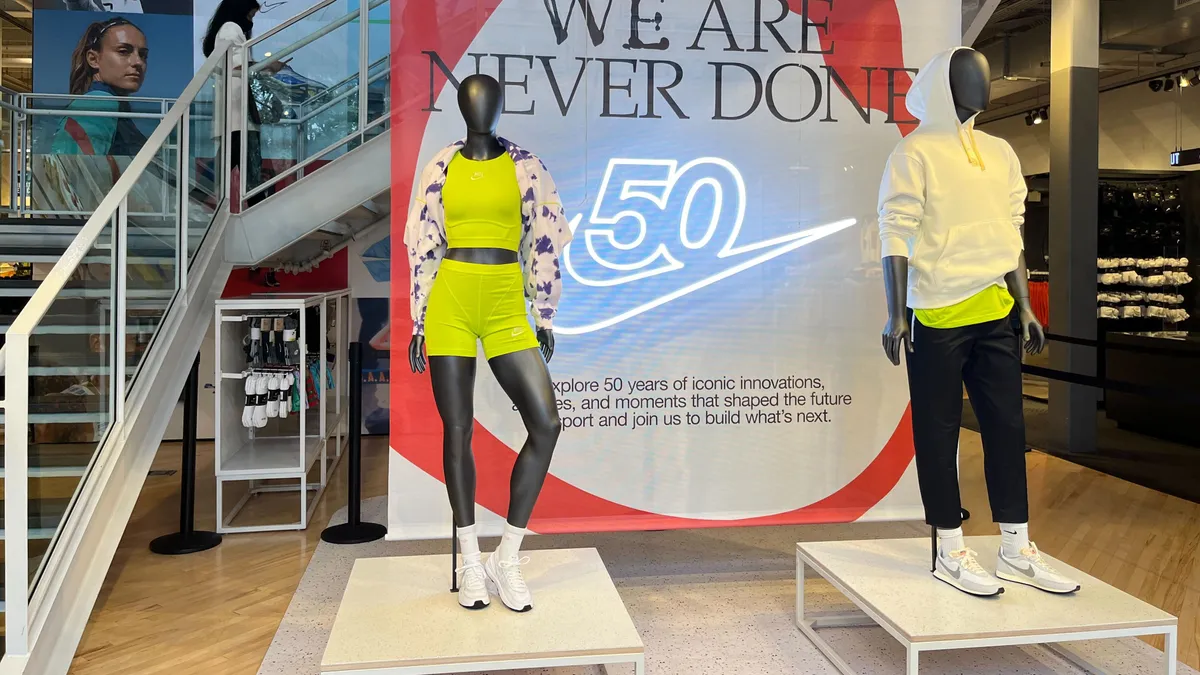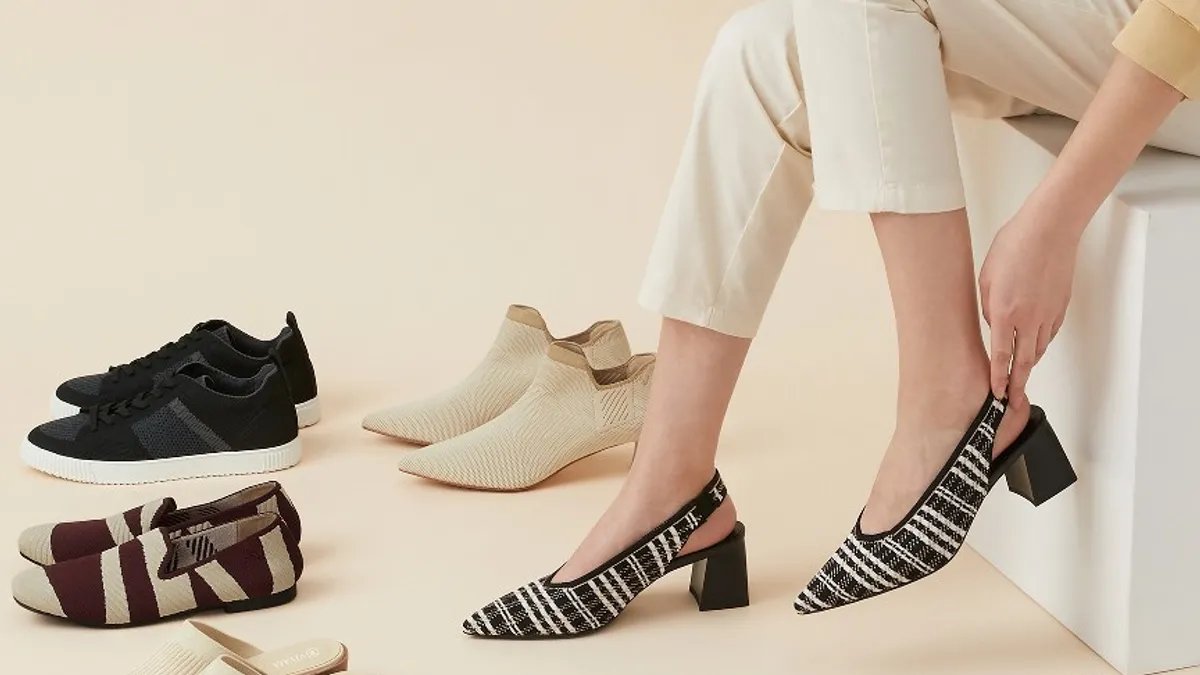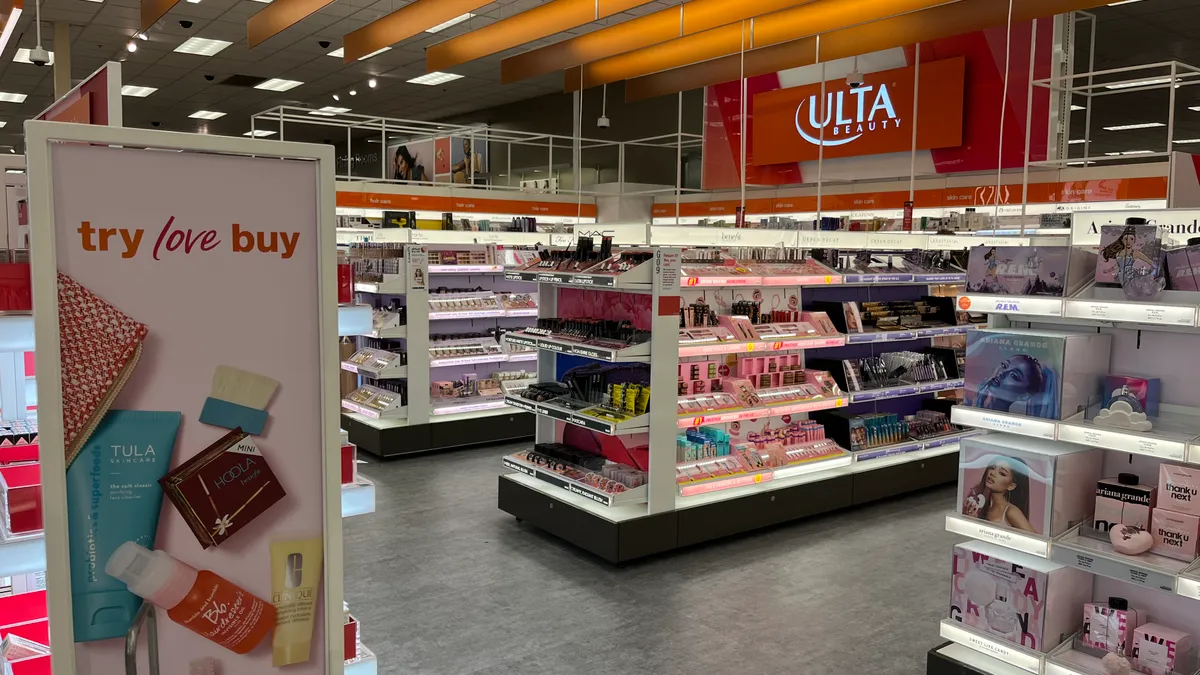At 50 years old, Nike is charting a path into the future that starts with its past.
The company is adopting the motto, “We are never done,” to celebrate the occasion and resurrecting Spike Lee’s Mars Blackmon character for a campaign in which Blackmon gets a talking to from a new character, Zimmie, about all of the young athletes changing their respective games, including Nike-sponsored Chloe Kim and Naomi Osaka.
“The past was great and all, but the future’s on deck,” Zimmie says in the ad before rattling off the achievements of some of the biggest athletes of the day.
And executives at the retailer’s Los Angeles headquarters last week made it clear that the future for Nike is female. In a women’s event celebrating the next 50 years for the retailer, executives outlined the ways they’re improving product for women and hoping to build a more inclusive company.
A scientific approach to product
As is standard for Nike, data is a big part of the retailer’s plan.
Bridget Munro, women’s research director at Nike, said the retailer’s investment in women’s specific innovation has doubled in the last two to three years, and is “accelerating and outpacing any other investment in innovation.” As part of that effort, the company has scanned “tens of thousands” of consumer's bodies, which have been added to a virtual database of sorts that Nike uses to test and design products for different women’s bodies.
“These data visualizations are really great because they allow us to build maps or places on the body where she sweats or where she needs to be cool, how she moves and where we might need to place different fabrics and materials,” Munro said. “And if we think about a designer, they're usually pretty visual and so that sort of information helps us build a data library. And what's super exciting actually is that our data library now becomes Nike’s own search engine. We can search across the company for information that we know and we all start at the same point.”
Once products are made, the company uses a variety of tools to test their efficacy. A soft tissue robot dubbed “brabot” lets Nike test different sports bra styles and measure for consistency. Nike also invested in a thermal mannequin that actually produces sweat and allows the brand to run tests around breathability or other thermal elements of clothing.
Bras have been a particular focus point for Nike — the brand changed its cup sizing to offer bras in over 70 different sizes, and has also simplified its sports bra offering.
“For many of us, no bra means no sport, and I'm definitely in that category,” Munro said. “So bras have been a real passion and trying to really think about how we learn about her and her journey and think about the bra not just as an object, but now: What is the experience that she needs to have with that bra? So we can meet her where she is in her movement goals, in her preference and how she wants to feel.”
The result is an emphasis on three core franchises which will now be available in low, medium and high support. That way, women can choose which style they prefer and then find it in the support level they need versus not being able to wear a style they like because it doesn’t provide adequate support.
“[Just] because you need high support doesn't mean you only get one bra, you actually can choose from all three,” Tania Flynn, vice president of women’s apparel product design at Nike, said. “And that is revolutionary to me to know that, you know, if you think about our Indy bra, which is a little bit sexier, a little strappier: before I couldn't wear this bra, but now I will be able to.”
Nike is simplifying its leggings strategy in a similar way, and will no longer break out its leggings by categories like running and training. Instead, the company will focus on three leggings franchises, its Universa, Go and Zenvy styles, which are differentiated instead by how they feel. For example, Zenvy is more lightweight and Go is more of a compression-focused legging. Those will each be available in five different lengths and two rises, and in sizes extra small to 4X.
Nike also revamped fit to make it more consistent across those styles as well, so that a high-rise or a crop would hit in the same place.
“We used to create leggings based on category — running legging, yoga legging, training legging, etc. — and we created dozens and dozens. So you might find one you like and if you try to go back later to buy it you're confused as to which ones to buy, so we really wanted to make it simpler,” Flynn said.
Bringing inclusion to the fore
Nike’s location at The Grove in Los Angeles is a good microcosm of how the retailer is hoping to expand the company’s reach to underserved communities. The store’s mannequins include plus-size figures in both the men’s and women’s floors, as well as a pregnant mannequin beside a selection of the Nike maternity collection and a mannequin wearing a prosthetic running blade.
Maternity has been a particular focus for Nike lately, with the company’s first dedicated maternity collection launching in 2020. That line will be expanding to more markets soon, Flynn said, and the retailer is expanding its outreach to mothers with new workout content as well. A 48-week “Move Like A Mother” program features workouts for different stages of pregnancy, as well as meditations and mental health content.
Athletics has a complicated history with pregnancy. Nike itself faced criticism for how it has treated some of its pregnant athletes in the past: Olympian Allyson Felix, who spoke out against Nike for its treatment of pregnant athletes alongside Alysia Montaño and Kara Goucher in 2019, became Athleta’s first-ever sponsored athlete that year. (The smaller athletics brand focused on women has since also signed former Nike athlete Simone Biles.)
“I got pregnant, and our team went from first place to last place,” former WNBA star Lisa Leslie, a Nike athlete, said in a panel last week. “And that was really hard, because you feel like you owe everybody — the job, the boss, everybody, teammates — so much.”
Leslie, who has been a Nike athlete since 1994, got pregnant and later returned to basketball, but said she doesn’t “remember there being apparel for that at all.” Nike is trying to change that now, and provide workout content to help athletes continue to pursue exercise during pregnancy. The women leading the workouts are all mothers, according to Nike, and the program was reviewed by a panel of women’s pre- and post-natal specialists.
“To have your body transformed in the way that a child transforms you is just, it's unbelievable, your body's never the same. You don't always get that memo,” Leslie said. “But it is great again, to see a company like Nike step up and recognize that we're still an athlete — there's still an athletic body in there. And we all have our challenges of trying to get back to wherever our best is. I don't think I ever got back to a size six. But you get back to your best of whatever that is."
Another Nike athlete, Ibtihaj Muhammad — who was the first American Muslim woman to wear a hijab while competing in the Olympics — is also influencing Nike’s next stage of inclusivity. Nike made strides in supporting Muslim athletes in 2017 with the “Pro Hijab” and two years later announced the “Swim Hijab” for Muslim athletes. However, Flynn noted a recent conversation with Muhammad in which she told the executive Nike wasn’t addressing the need for breathable, summer-appropriate activewear that still covers up the body.
“Racerbacks, tank tops, short sleeves, those sorts of things — that's typically how we would address the funnel regulation conditions at that time of year,” Flynn said. “But talking to her really led us to believe, ‘Oh, wait, we're missing this market. We're missing this consumer.’ If Ibtihaj needs this, we know there's a lot of people out there that need this.”
Nike has left a mark over the past 50 years. The brand makes double its closest competitor, Adidas, and 10 times more than some of its smaller rivals. Foot Locker CEO Dick Johnson even complimented its long-time partner in its most recent earnings call, describing Nike as “a driving force in shaping the industry.”
The retailer doesn’t really have catching up to do — it’s been at the forefront of the athletics space for some time now. It’s staying there that’s important, and that requires staying relevant.
“Really what we're doing is spending a lot of time setting up, what will the next 50 years look like?” Shannon Glass, vice president and general manager of Nike North America, said. “And what is the role of her and women as we go set that stage?"





















